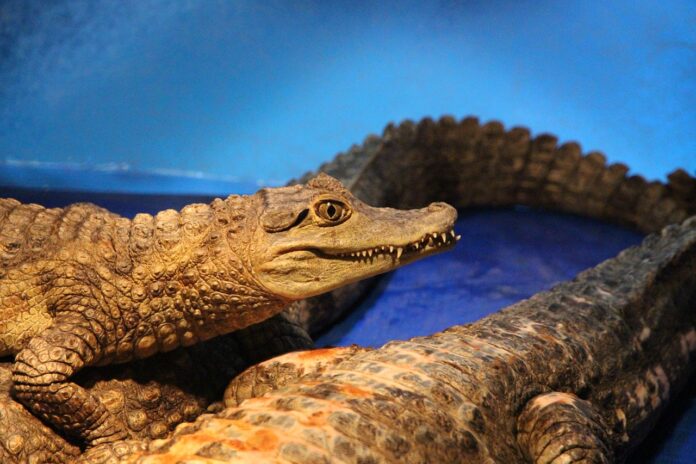Caimans live in South and Central America. They are among the most ancient inhabitants of our planet, having changed very little in appearance. Caimans belong to the alligator family and the class of reptiles. Their natural habitat and enemies have shaped their unique character.
Interesting Facts About Caimans
- Adult caimans have a color ranging from dark green to brown. They possess a chameleon-like ability to change the color of their skin in cold temperatures. This happens due to the expansion of black pigment cells, causing their skin to darken significantly.
- Caimans primarily live near bodies of stagnant water — small lakes, rivers, and wetlands. During droughts, some species bury themselves in mud and go into hibernation.
- When in danger, caimans use sound to communicate. Adult caimans make noises that resemble dog barks — hoarse and prolonged, while the young make short, hissing sounds, similar to croaking.
- The structure of a caiman’s eyes allows them to see and hunt well at night. They begin hunting at dusk, fully submerging underwater with only their nostrils and eyes above the surface. Their main hunting method is to remain motionless, patiently waiting for their prey to approach.
- Depending on the climate, females can lay from 10 to 40 eggs. They build nests from vegetation and soil. Interestingly, the gender of the offspring is influenced by temperature. If the average temperature is around 32°C (89.6°F), mostly males are born. If it’s higher or lower, females are born.
- During the dry season, caimans show heightened aggression. Due to prolonged forced fasting, they often become cannibals, eating weaker members of their species. In this period, humans may also become their prey.
- Although all caimans develop aggressive tendencies from a young age, those raised in captivity become accustomed to their human caretakers. However, it’s crucial that they are not hungry, as this puts people at risk.
- The structure of a caiman’s jaws prevents them from consuming large animals. They also cannot chew, swallowing their food whole. The exception is turtle shells. Caimans’ diet mainly consists of river fish, mollusks, frogs, and small rodents.
- Caimans are generally calm. Due to their timid nature and relatively small size, they do not attack humans or large animals.
- Caiman populations have significantly decreased over the last decade. Since their skin is highly valuable, poachers have hunted them relentlessly. Another cause of their decline is habitat destruction by humans. Some species are now listed in the Red Book of endangered species.
- If caimans were to disappear completely, the biological balance would be disrupted. They play an important role in nature, acting as ecosystem cleaners by consuming worms, mollusks, and insects. By eating piranhas, they also help regulate the population of non-predatory fish.
